Scrubbing the decks is one of the most monotonous maintenance jobs on a boat. And decks covered with nonskid-with all of its nooks and crannies-make removing dirt, grime, mud, or fish blood all that much harder. What if you could coat your boats nonskid decks with a protectant that would make cleanup a whole lot easier? The decks would only need to be rinsed clean.
Well, we found three products that claim to do just this. These nonskid waxes are supposed to do their job without making the nonskid slippery. One product, Auroras Sure Step, actually claims to increase the traction of the nonskid. We decided to investigate.
WHAT WE TESTED
We tested a trio of products: Sure Step from Aurora Marine, Woody Wax from Tower Plus 2000, and Star brite Non-skid Deck Cleaner. The Star brite is a cleaner, but it contains a Teflon substance (the company calls it PTEF or PTFE) that leaves a protective coating. The other two products are strictly protectants and require that the decks be clean before application. In fact, Aurora recommends applying two of its other products to clean the surface. Aurora owner Richard Kittar said theres a risk that residue from other cleaners can get trapped under the Aurora Sure Step and lead to discoloration. This wont happen if Aurora Boat Clean and Aurora Boat Scrub are used on the nonskid first, he said. The three products are sold as a package for $32.

No special cleaners are required with Woody Wax. It can be applied to clean decks, wet or dry. You let it dry for 20 to 30 minutes, rinse with water, and buff with a clean cloth. Application of the Aurora Sure Step is similar: Apply with a brush, let dry (no time is specified), and buff with a brush. Apply the Star brite with a deck brush, too, then allow it to sit for two to three minutes. Scrub and rinse.
HOW WE TESTED
We thoroughly cleaned three small sections of the nonskid-covered (diamond pattern) cockpit sole of a test boat. We applied each product, following the directions carefully. The test was a two-day affair because Aurora requires a second application of its Sure Step after 24 hours. The remainder of the sole was cleaned, but left untreated.
To evaluate how well each product resisted dirt, testers brushed mud on a portion of each treated section. And for stains, testers secured some fish blood from a very unwilling 3-pound Spanish mackerel (yes, sometimes this job has its benefits) and splattered it on our test sections. We let the mud and blood cook in the 85-degree sun and then rinsed the deck with a hose. We also tested to see whether these substances added or detracted from the grippiness of the nonskid. With the test boat on its trailer, we used a forklift to raise the trailer tongue and tilt the boat to a 15-degree angle. Testers stood on each section with bare feet and two types of footwear: boat shoes and boat sneakers. We tested with the decks dry and wet.
RESULTS
In the traction test, Woody Wax came out on top, followed by Star brite and Aurora. Testers noticed little difference between the sections when they wore boat shoes or boat sneakers. Differences emerged when testers shed their footwear and the deck was wet, however. The Woody Wax clearly provided the best traction. The Aurora section was the slickest, about equal to the untreated section. The Star brite section offered a slightly bet-ter grip than the untreated deck.
In our ease-of-cleaning test, the Woody Wax prevailed again. We were able to completely remove the blood and mud from the section after a rinsing and a light scrubbing with a soft brush (no soap). The mud was similarly brushed off the Star brite and the Aurora sections, but blood stains remained. The stain on the Star brite panel was more evident than the one on the Aurora section.
CONCLUSIONS
The Woody Wax flat-out works. It is relatively easy to apply. It left a nice shine on our deck, and most importantly, it resisted mud and blood stains. Woody Wax is expensive ($29 through the manufacturer). But if youre constantly cleaning your nonskid, then its worth the money, in our opinion. To get the nonskid clean, we recommend 3M or Meguiars nonskid cleaners (see January 2005 issue).
We plan to check the treated deck sections after six months, so look for an update.
CONTACTS
STAR BRITE
800/327-8583
starbrite.com
AURORA
866/214-3444
auroramarine.com
WOODY WAX TOWER PLUS 2000
800/619-4363
woody-wax.com


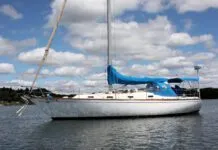

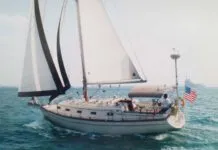
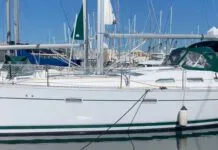
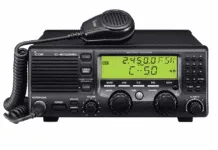



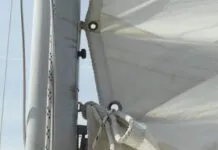

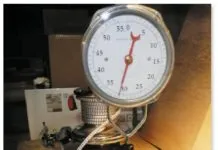

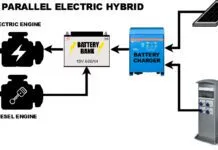





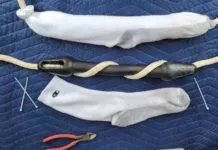


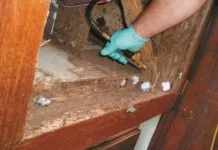


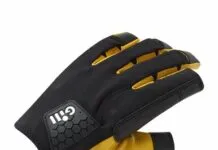




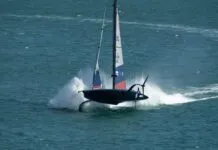
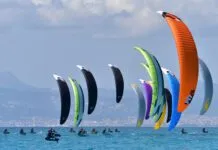

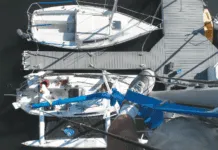
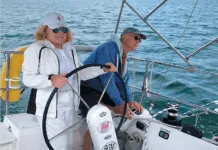
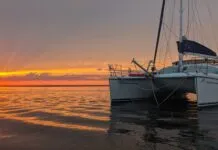




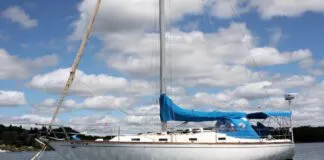
I think you should have used Star Brite Deck wax with PTFE for the comparison since the other product is a cleaner that is just leaving a residue of PTFE.